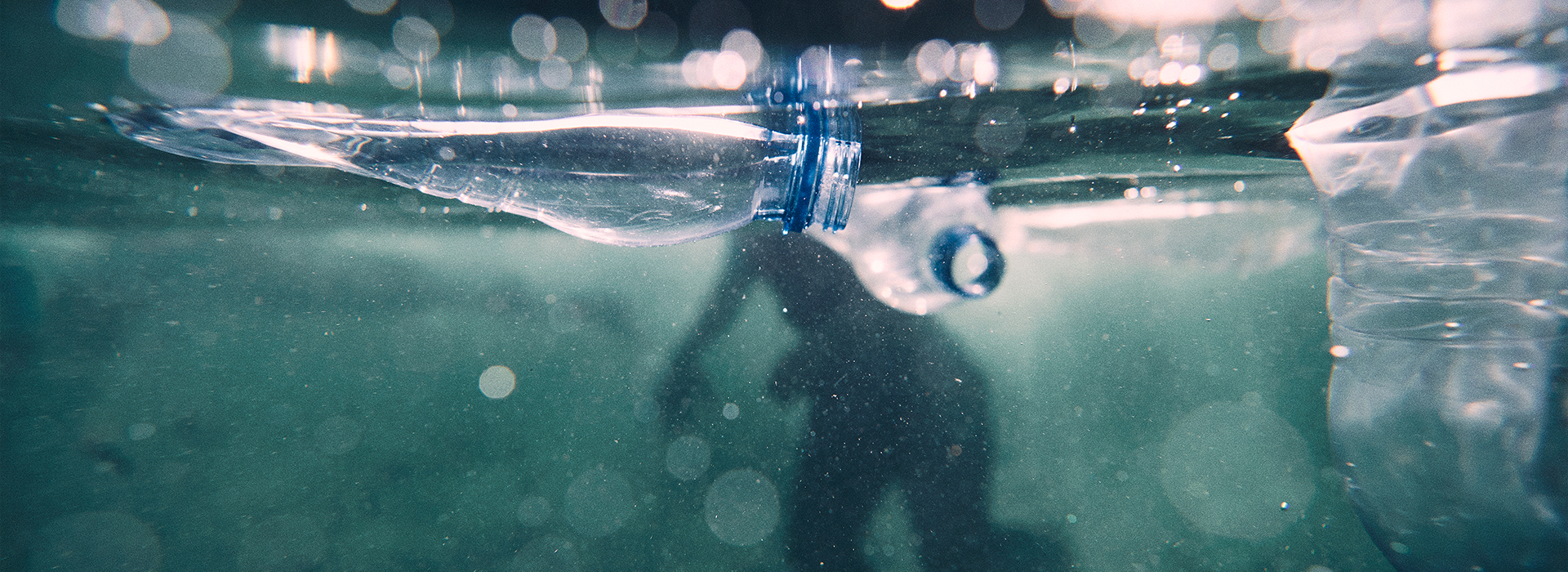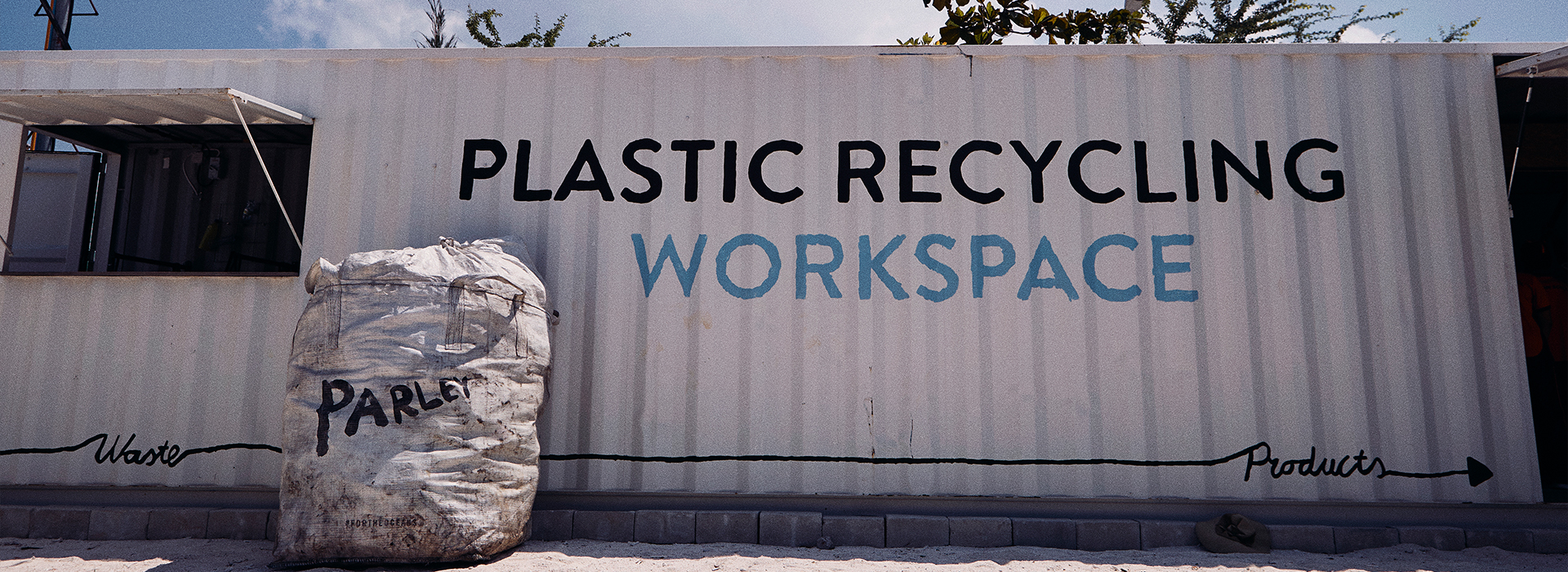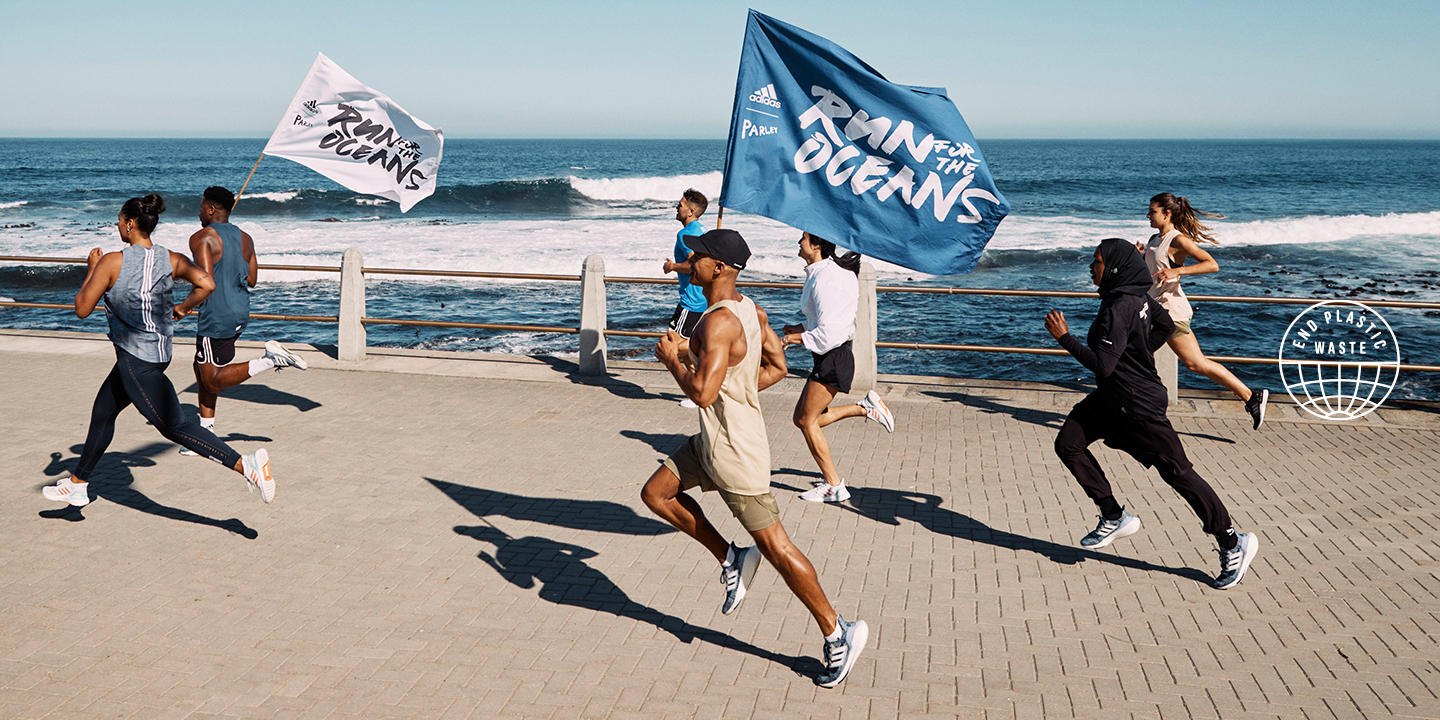
3 MAJOR SOURCES OF MARINE PLASTIC POLLUTION
Oceans are the biggest, most vibrant ecosystems on planet Earth, containing tens of thousands of species and producing half the oxygen we breathe. Sadly, oceans are also our most threatened ecosystems—polluted by plastic waste that endangers not just marine life, but those of us on dry land. Scientists estimate that each year over eight million tons of plastic are dumped into the oceans. It’s a staggering number to wrap your head around. So how does that figure break down?
INDUSTRIAL PLASTIC: Industry has a huge role to play in the plastic problem. Since its invention, over 8 billion tons of plastic have been produced globally. That’s why at adidas we are always looking for ways to reduce our plastic footprint.
MICROPLASTIC: Some of the worst pollution is invisible. Plastic breaks down in tiny pieces of microplastic that ends up in the oceans, affecting marine life and ending up on our plates. 1.4 quadrillion microfibers are estimated to be in the oceans as a result of laundering clothes.
CONSUMER PLASTIC: This is where you come in. Consumer plastic is the kind we use in our everyday lives: bottles, bags, straws, takeout containers, and much more. A plastic bag has an average “working life” of a mere 12 minutes, and once it’s thrown away, that bag can take up to 1,000 years to decompose. Worldwide, an estimated 1 trillion single-use plastic bags are produced every year, and less than 1% of those are recycled. Millions end up in the oceans.
WHY WE NEED TO PROTECT THE OCEANS
The immediate threat from plastic pollution is to all the species that call the oceans home.
But marine life isn’t the only kind that suffers as the oceans fill with human-made pollution. Erosive plastics such as polystyrene (Styrofoam) are known to release harmful toxins as they break into smaller pieces in the oceans. As a result, mercury and other alarming pollutants have been found in seafood at increased concentrations. The extent of the threat to food safety remains unclear, but we know that mercury can cause major problems for human health—from organ damage to childhood development issues.
New research has also found a link between marine plastic and climate change. As trash floats around in our oceans, taking hundreds of years to decompose, it releases powerful greenhouse gases. These gases—including methane and ethylene—are thought to be a major contributor to the degradation of the Earth’s atmosphere.
Thankfully, there are measures we can take to start healing our oceans. In isolation these lifestyle changes might have limited impact, but if we all do our part, we can genuinely make a difference.

STEP 1: BRING YOUR OWN BAGS
Just one plastic bag in our oceans can severely harm multiple sea creatures. That’s because these barely-used bags look like food to ocean animals and can cause fatal blockages when swallowed. What’s especially troubling is that plastic bags take so long to degrade that a dead animal can decompose and release the plastic bag inside it back into the water for another animal to eat. Next time you shop, bring your own reusable bag.
STEP 2: BAN THE BALLOONS
We hate to be a buzzkill, but balloons are especially dangerous to marine life. Those that escape our hands may end up in our waterways. As an alternative, try a piñata. It’s recyclable and way more fun anyway.
STEP 3: DO WITHOUT PACKAGING
Single-use packaging is rampant in the food industry. Thankfully, unpackaged alternatives are now becoming available for everything from baked goods to hand soap. Check your local farmer’s market or a zero-waste store that makes a concerted effort to provide sustainable alternatives. If you do shop at a typical supermarket, consider buying products with recyclable packaging.
STEP 4: SHOP RESPONSIBLY
Despite the world trend toward more environmentally conscious consumer behavior, plenty of companies still use virgin plastic, meaning new plastic that has never been used or processed before. At adidas, we’ve partnered with environmental organization Parley for the Oceans to create a line of shoes and apparel made with recycled and upcycled waste from coastal communities.

STEP 5: THINK ABOUT YOUR FOOD
Because of their small size, microplastic beads can easily find their way into the diet of ocean wildlife. The science is still out on how much of a threat this could pose to humans, but if you’re a seafood lover, you may be unknowingly eating thousands of pieces of microplastic each year—a pretty unappetizing notion, and certainly enough to make you reconsider using microbead-laden products.
STEP 6: B.Y.O.W.B.T. (BRING YOUR OWN WATER BOTTLE, TOO)
91% of all plastic around the world is not recycled. This, coupled with the fact that annual bottle consumption is set to hit half a trillion by 2021, means you should skip this kind of plastic item entirely. Instead, use an aluminum bottle or reusable plastic container.
STEP 7: RUN FOR THE OCEANS
Want to get in shape and keep plastic out of our oceans at the same time? Take on Run For The Oceans from May 28 – June 8, 2021. It’s a global movement that uses exercise to address the problem of marine plastic pollution. To date, more than 3 million people have taken part in Run For The Oceans, logging their kilometers in the adidas Running app to raise money for and awareness of the problem of marine plastic pollution. This year, we're partnering with Parley again in another effort to use running to help end plastic waste and protect our oceans.